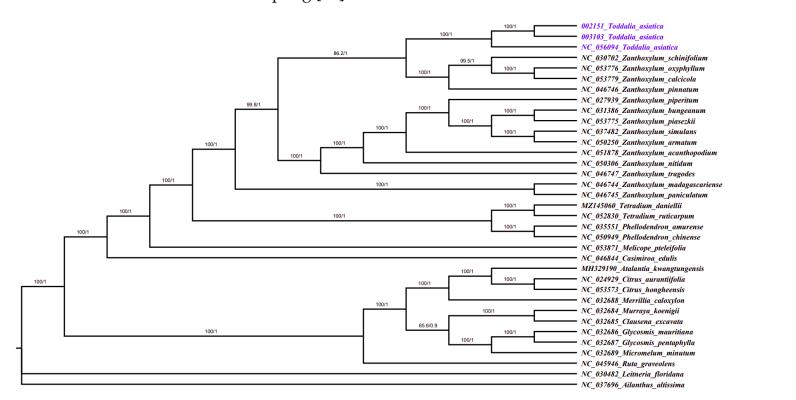Name:HU GuangWan
Tell:
Email:guangwanhu@wbgcas.cn
Organization:Wuhan Botanical Garden
Research Reveals the Origin- Dispersal Areas of Toddalia Species
2022-03-29


A sliding window analysis of nucleotide variability (Pi) values of different regions of Toddalia (Image by WBG)

Comparison of the borders of large single copy (LSC), small single copy, (SSC), and inverted repeat (IR) regions among the Toddalia plastomes (Image by WBG)

Phylogenetic tree construction of 35 taxa using maximum likelihood (ML) and Bayesian inference (BI) methods using 79 protein-coding genes (Image by WBG)

Maps showing distribution modeling for Toddalia asiatica for the years 2050 and 2070 (Image by WBG)